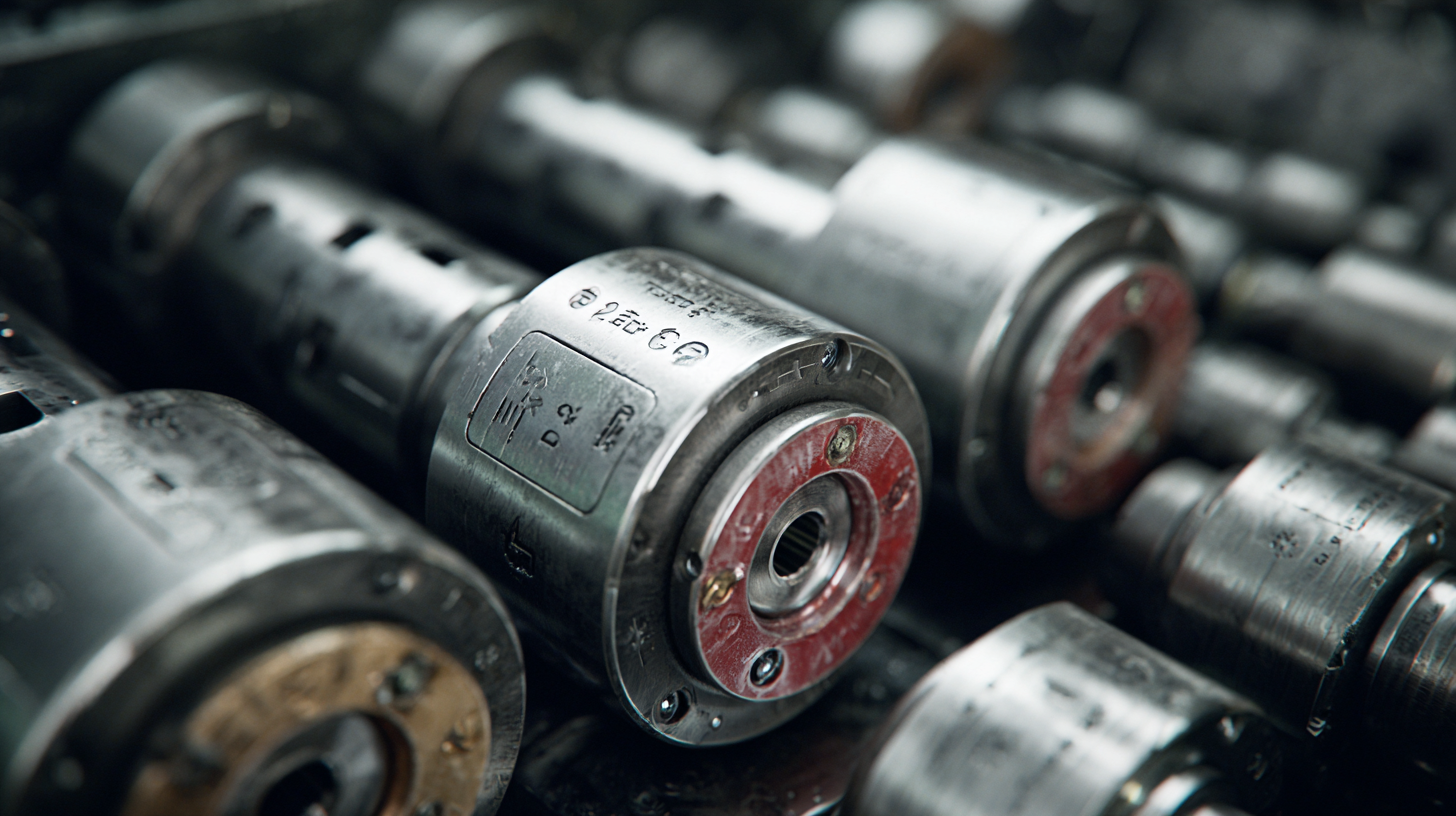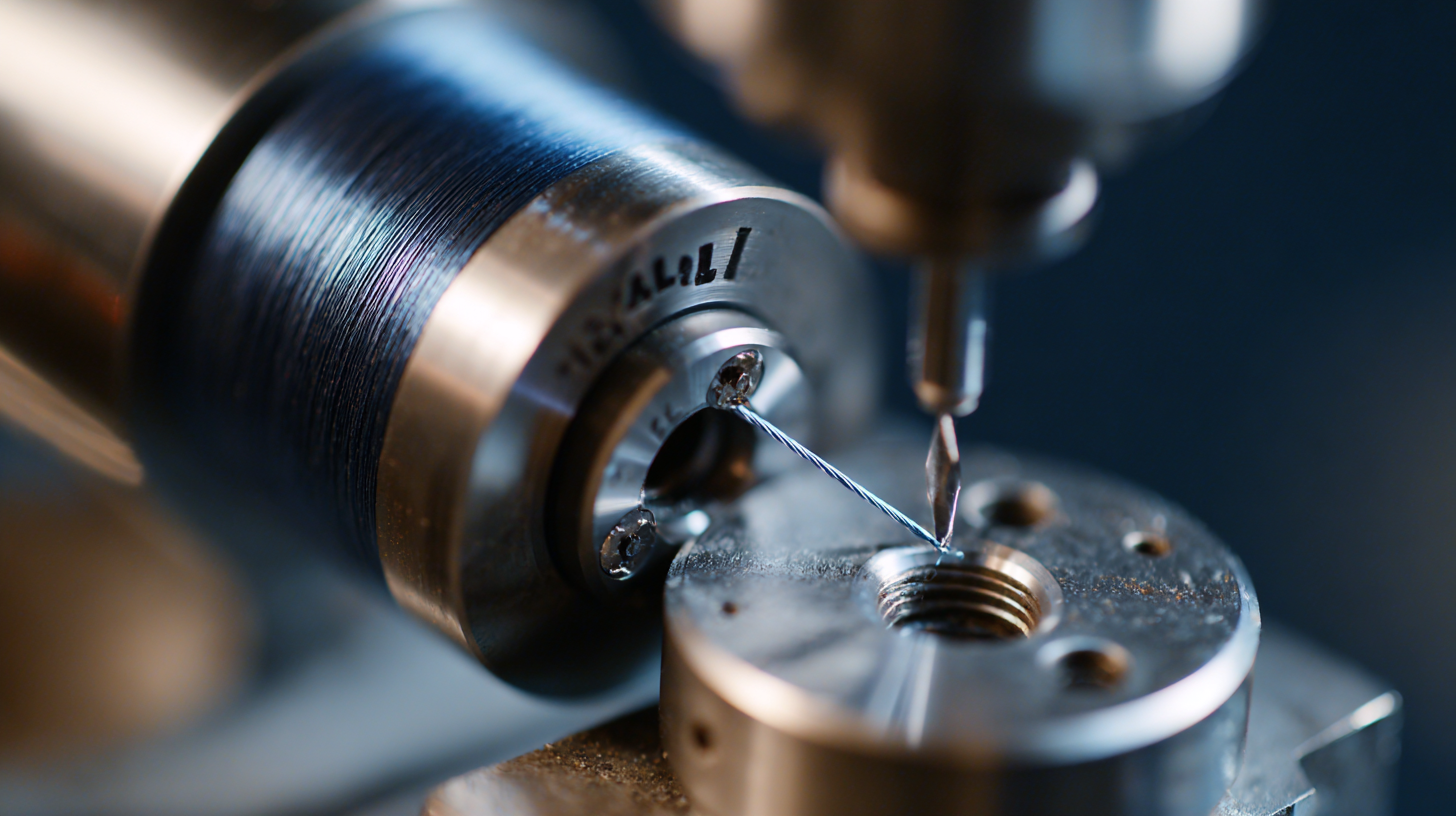
Exploring Industry Applications of Best Thread Rolling Dies and What Makes Them Essential
In the fast-evolving manufacturing sector, the precision and efficiency of production processes are paramount, driving the demand for high-quality tools such as Thread Rolling Dies. According to a recent report by MarketsandMarkets, the global die casting market is projected to reach USD 85.4 billion by 2026, reflecting an annual growth rate of 6.5%.

Thread rolling, a metal forming process employed to create threads on cylindrical surfaces, plays a critical role in enhancing product capabilities across various industries, from automotive to aerospace. The unique advantages offered by Thread Rolling Dies, including improved mechanical strength and surface finish, position them as essential tools in the manufacturing toolkit. As industries increasingly strive for optimal performance and cost-efficiency, understanding the applications and benefits of these dies becomes imperative for manufacturers looking to stay competitive in the marketplace.
The Importance of Thread Rolling Dies in Contemporary Manufacturing
Thread rolling dies play a crucial role in contemporary manufacturing, especially in industries that require precision and durability. These dies are essential for producing threads that enable secure fastening in various applications, from automotive components to aerospace parts. Unlike traditional cutting methods, thread rolling compresses the material, resulting in threads that exhibit greater strength and better surface finish. This process minimizes waste and enhances productivity, making it a cost-effective solution for manufacturers striving for high-quality output.
The importance of thread rolling dies extends beyond mere functionality; they directly influence the overall efficiency of the manufacturing process. By utilizing advanced designs and materials, modern thread rolling dies can accommodate high-speed production environments without sacrificing accuracy. Their ability to create tight tolerances reduces the need for additional machining, thereby streamlining workflows. In a competitive landscape, where efficiency and quality are paramount, integrating the right thread rolling dies into production lines can significantly impact a company's ability to meet demand while maintaining high standards.
Industry Applications of Best Thread Rolling Dies
Key Industries Benefiting from High-Quality Thread Rolling Dies
The importance of high-quality thread rolling dies cannot be overstated, as various industries leverage their precision and durability to enhance productivity and product quality. According to a recent report by the Research and Markets, the global thread rolling machine market is projected to reach $1.6 billion by 2027, growing at a CAGR of 4.5%. This growth is largely driven by the automotive industry, where precise threading is essential for manufacturing components that meet stringent safety and performance standards.
Another key sector benefiting from advanced thread rolling dies is the aerospace industry. With the increasing demand for lightweight and stronger materials, manufacturers are turning to thread rolling technologies for components such as fasteners and fittings. A study by MarketsandMarkets highlighted that the aerospace fasteners market is expected to grow from $6.65 billion in 2022 to $8.95 billion by 2027, with the need for high-quality thread forms being a significant factor in ensuring the reliability and safety of aircraft operations. These applications illustrate how high-quality thread rolling dies are integral to various industries, driving improvements in both efficiency and product integrity.

Design and Material Innovations in Thread Rolling Die Production
The evolution of thread rolling dies has been significantly influenced by design and material innovations aimed at enhancing their performance and durability. Modern manufacturing techniques, such as computer-aided design (CAD) and finite element analysis (FEA), allow engineers to create die geometries that optimize the rolling process. This results in improved accuracy in the thread profiles and ensures a smoother surface finish, which is crucial for applications in industries like automotive, aerospace, and construction. The integration of advanced simulation tools also enables designers to predict the lifecycle of dies, minimizing downtime and maximizing productivity.
In addition to design advancements, the choice of materials has also transformed the thread rolling die production. With the introduction of high-speed steels and carbide composites, dies now exhibit greater strength and wear resistance, which translates to longer service life and reduced failure rates during operation. These materials can withstand the extreme pressures and temperatures experienced during the rolling process, ensuring consistency in manufacturing. Furthermore, the development of coatings, like titanium nitride (TiN) or diamond-like carbon (DLC), enhances the performance of the dies, making them essential tools in achieving high-quality threaded components in today’s competitive industrial landscape.

Quality Control Measures for Optimal Thread Rolling Die Performance
The performance of thread rolling dies is pivotal in various industries, particularly in the production of gears and fasteners. Quality control measures play an essential role in ensuring the longevity and effectiveness of these dies. In a cylindrical die forced throughfeed rolling process, specifically designed to address the end-effect behavior usually observed in standard radial-feed methods, manufacturers see a notable reduction in material wastage and an increase in the accuracy of the threaded profile. According to industry reports, companies implementing advanced die designs have recorded improvements in thread quality by up to 25%, enhancing overall productivity.
Furthermore, consistent monitoring of die wear and implementing rigorous quality checks during the production process ensures that dies maintain optimal performance. Regular inspections using advanced technologies like laser scanning and digital imaging can detect wear patterns early, facilitating timely maintenance. A study indicates that organizations adopting these quality control measures can reduce die failure rates by nearly 30%, leading to significant cost savings. Thus, the integration of robust quality control within the lifecycle of thread rolling dies not only elevates the performance of the final product but also sustains the operational efficiency of manufacturing processes.
Global Market Trends in Thread Rolling Die Applications and Demand
The global market for thread rolling dies has been experiencing notable growth alongside various industry applications that leverage these essential tools for manufacturing. As companies across sectors seek efficient and cost-effective ways to produce threaded components, the demand for high-quality thread rolling dies is becoming increasingly apparent. The technology behind thread rolling not only enhances precision and reduces material waste but also contributes to overall production efficiency, making it a vital part of mechanical manufacturing.
In recent years, the rise in demand for automation and precision engineering has propelled the thread rolling die market forward. Industries such as automotive, aerospace, and construction are at the forefront of this trend, utilizing these dies for enhanced performance and longevity of their products. With projections indicating that the market for blinds and shades, a notable application area for these products, is expected to grow substantially, it reflects the broader trend of increasing investment in innovative manufacturing technologies. As businesses continuously search for reliable solutions, thread rolling dies stand out as key components that drive efficiency and ensure high-quality output across various industrial applications.
Exploring Industry Applications of Best Thread Rolling Dies and What Makes Them Essential - Global Market Trends in Thread Rolling Die Applications and Demand
| Application Industry | Market Share (%) | Growth Rate (CAGR 2023-2028) | Key Trends |
|---|---|---|---|
| Automotive | 35% | 5.1% | Increased demand for lightweight materials |
| Aerospace | 25% | 4.5% | Emphasis on fuel-efficient designs |
| Industrial Machinery | 20% | 6.0% | Automation and precision manufacturing |
| Construction | 10% | 4.0% | Sustainability and eco-friendly practices |
| Electronics | 5% | 7.2% | Miniaturization of components |
